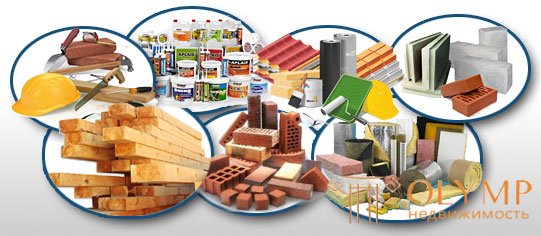
Construction is a sphere of human activity aimed at creating an artificial habitat. The goals and objectives of the construction were outlined by the Roman architect and military engineer Mark Vitruvius Pollio:
Benefit - Strength - Beauty

The purpose of building structures is to perform the functions of carrying a power load, to protect against atmospheric influences (cold, heat, precipitation), to protect against external harmful influences (noise, dust, harmful substances). In order for constructions to successfully and reliably perform these functions, they must be made of materials with a specific set of properties appropriate to the tasks assigned. Thus, the concepts of "material" and "properties" are the key, basic in the implementation of human construction activities. No building can be properly designed, built and operated without the availability of appropriate building materials.
In this regard, with the high-quality implementation of construction, reconstruction of housing and proper operation of it, a highly qualified civil engineer:
• selects the optimal material for the design, operating under the specified operating conditions, according to the complex of its mechanical, thermal, acoustic and other properties;
• correctly assesses the conditions of use of the material in the structure and structure, determines the degree of aggressiveness of the influence of the environment and recommends ways to protect structures from destruction;
• accepts the material, that is, evaluates its properties;
• properly transports and stores products in order to prevent a reduction in their quality;
• takes into account the effect of material quality on the durability and reliability of building products and structures.
To do this, a civil engineer must:
- know the basic properties of building materials, technological methods of their manufacture;
- have the skills to test building materials and products, know the principle of operation of instruments and equipment for testing;
- know the methods and ways to protect materials and products from destruction.
All this is the task of studying the course “Building materials”.
Materials are substances that go into making something. Construction materials are used to manufacture building products and structures. It is an organized (structured) system of components (composition), forming a whole and endowed with functional characteristics (properties).
Properties are internal, intrinsic to this material, features that determine its difference or generality with other materials and manifest as responses to the effects of external fields or environments. A simpler definition: properties is the ability of a material to respond in a certain way to individual or aggregate external or internal influences.
Under the influence of loads, deformations and stresses are formed in the material, irreversible material transformations occur, damage accumulates, leading to wear of the material in the structure. The assignment determines the set of operational factors of the environment affecting the material, and determines the essence of the operational processes of changing the material in the form of changes in the composition, structure, its state and as a result of changes in properties.
Materials science is a science that considers the natural relationships of the properties of a material with its composition, structure, and state; mechanism of manifestation of properties during the application of the material, i.e. in the interaction of the material with the environment.
The content of the course “Building materials” is the disclosure of the nomenclature of building materials, information about their composition, structure and properties, production technology and areas of rational use in construction.
Что бы оставить комментарий войдите
Комментарии (0)